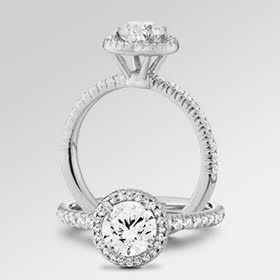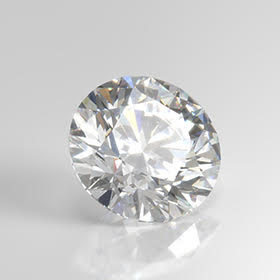Luxury, beauty, and love are some words that have been associated with diamonds for a long time. These stones symbolize commitment and endurance. It makes them a favored option for jewelry pieces like engagement rings and other jewelry. However, there is a hidden dark side to the diamond industry. There have been some ethical concerns that surround the mining and trade of natural diamonds.
As a response to these concerns, a new player has emerged in the diamond industry: Man made diamonds. These diamonds have emerged as a more ethical alternative. In this blog, we will be exploring the social impact of man made diamonds and the ethical considerations that surround their production and consumption.
-
Ethical Mining Concerns
The conventional diamond mining industry has been haunted by ethical issues for decades now. Some natural diamonds are mined in conflict zones. Such diamonds are called blood diamonds. They are also called conflict diamonds.
The profits generated from selling these diamonds are used for unethical reasons. They are used to finance armed conflicts. These diamonds are also associated with human rights abuses. It has led to the suffering of countless individuals in affected areas.
Man-made diamonds, on the other hand, are created in controlled environments. They are specifically created in labs. Thus, they eliminate the potential for supporting conflicts or unethical practices. This transparency in the production process provides consumers with peace of mind. They know that their purchases do not contribute to human suffering.
-
Environmental Impact
Natural diamond mining is notorious for its environmental consequences. Large-scale open-pit mines can result in deforestation, soil erosion, and much more. These practices also result in the release of harmful chemicals into local ecosystems. This not only affects the environment but also the livelihoods of nearby communities.
Man-made diamonds are considered more environmentally friendly because they significantly reduce the need for destructive mining practices. The process of growing diamonds in a lab involves significantly lower carbon emissions. It makes them a greener option for those concerned about climate change and habitat preservation.
-
Labor Practices
Another ethical concern in the diamond industry is the treatment of laborers, often in developing countries. In some cases, workers in natural diamond mines endure poor working conditions, low wages, and a lack of job security.
This exploitation is a social issue that has attracted significant attention. best man made diamonds are produced in laboratories. They require controlled environments. These diamonds are often created by skilled technicians and scientists.
They work in safe conditions and receive fair compensation. This presents an ethical advantage over the natural diamond industry. This is due to the fact that mining leads to labor abuses, and it is more common.
-
Price Accessibility
Man-made diamonds are typically cheaper than mined diamonds. This accessibility can play a significant role in the social impact of these gemstones. More people can afford a beautiful, ethical, and sustainable option for engagement rings, jewelry, and other uses.
It democratizes access to luxury. This promotes inclusivity and diversity in the consumer market. The largest man made diamond are much cheaper than natural diamonds of similar or lesser size. Due to this reason, more and more people can afford synthetic diamonds.
-
Ethical Consumer Choices
The rise of synthetic diamonds aligns with a broader trend of ethical consumerism. Many people today are consciously choosing products and services that align with their values.
This includes environmental and social ethics. Cultured diamonds empower consumers to make choices that reflect their concerns about environmental sustainability, ethical labor practices, and the avoidance of conflict minerals.
-
The Future of the Diamond Industry
The emergence of cultured diamonds challenges the traditional diamond industry to become more responsible and transparent. As consumer awareness grows, there is a growing pressure on natural diamond companies. This pressure is to improve their ethical and environmental practices. Some companies have responded by adopting more ethical mining and labor practices.
In conclusion, the social impact of synthetic diamonds is largely positive. This is due to the fact that they address several ethical concerns associated with the traditional diamond industry. These gems offer a more sustainable, affordable, and ethically sound alternative.
Buyers are becoming highly conscious of the ethical importance of their purchases. Thus, man-made diamonds are likely to play a significant role in reshaping the future of the diamond industry. They are promoting a more accountable and moral approach to luxury and beauty.
Common Questions Related to Lab Grown Diamonds
What are Man Made Diamonds called?
Man made diamonds are known by many names. Some of the widely used names of man made diamonds are cultured diamonds, synthetic diamonds, and lab diamonds. These diamonds are mainly called lab-grown diamonds.
Are man made diamonds real?
Yes. Man made diamonds are indeed real diamonds. They feature the same hardness as mined diamonds. They pack the same level of brilliance as natural diamonds. The optical properties of these diamond is on par with natural diamonds. These factors make lab diamonds as real as natural diamonds. However, these diamonds have a significant advantage over natural diamonds. They are much more cheaper than natural mined diamonds.
How are Man Made Diamonds made?
There are two major ways to create man made diamonds. Both these methods created diamonds in a controlled setting. These methods are CVD and HPHT. CVD stands for Chemical Vapor Deposition. HPHT stands for High Pressure High Temperature.
CVD diamonds are grown in a lab through a process in which a diamond seed crystal is placed in a chamber filled with a carbon-rich gas at very high temperatures and pressures. Typically methane is used in this process. Carbon atoms in the gas are deposited onto the seed crystal, gradually building up the diamond over time. The temperatures in this chamber can go up to 1200 degrees Celsius.
HPHT lab grown diamonds are created using a process that simulates the extreme heat and pressure conditions found in the Earth’s mantle. This process allows carbon atoms to crystallize and create diamonds. Diamonds produced through the HPHT method are known for their high purity and quality. They can have fewer impurities and defects compared to some natural diamonds.
Types of Man Made Diamonds
There are various types of cultured diamonds. Two of them are mentioned above. They are CVD diamonds and HPHT diamonds. Some of them are mentioned bellow:
-
Detonation Nanodiamonds (DND): DNDs are produced through the detonation of explosives in a chamber containing carbon-containing materials. The extreme pressure and temperature generated by the explosion lead to the formation of tiny diamond particles.
-
Ultrahard Fullerene Diamonds:
Ultrahard fullerene diamonds are created by compressing fullerene, a molecule made of carbon atoms, under extreme pressure. This process results in small, exceptionally hard diamond particles.
-
Microcrystalline and Nanocrystalline Diamonds:
These diamonds are produced by compacting small diamond crystals and particles using a variety of methods, resulting in materials with varying levels of hardness and industrial applications.
Do Man Made Diamonds hold their value?
According to reports, unfortunately, synthetic diamonds do not quite hold their value as natural diamonds do. Depending on market trends in the diamond industry, natural diamonds hold their value quite well. However, it is not the same case for cultured diamonds.










